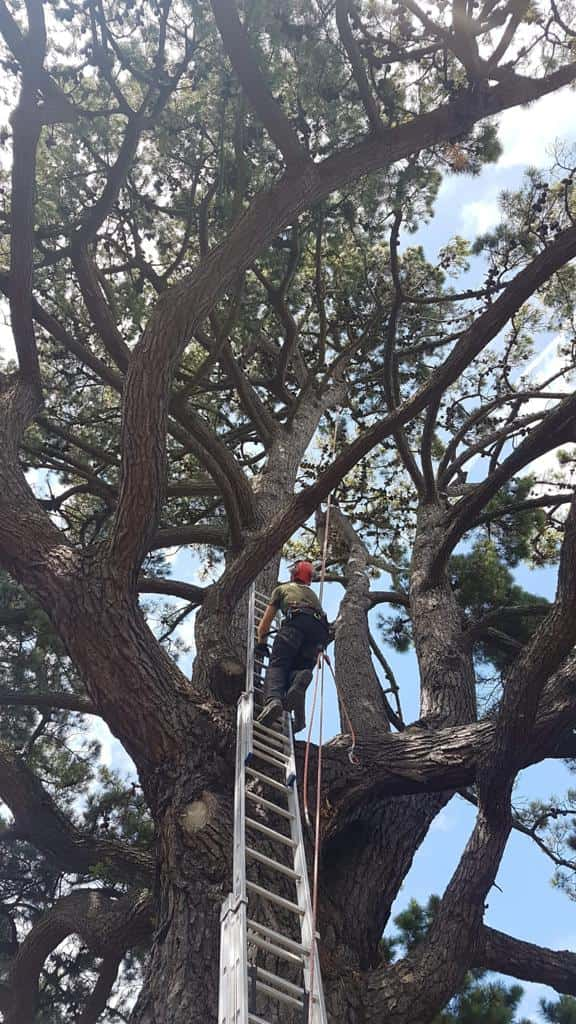Introduction
Trees are an essential part of our environment, providing oxygen, shelter, and beauty to our surroundings. However, just like any other living organism, trees require care and maintenance to remain healthy and structurally sound. Tree surgery plays a crucial role in preserving trees, preventing disease, and ensuring safety in both residential and commercial landscapes.
Understanding the Importance of Tree Surgery
Promoting Healthy Growth
Regular tree surgery helps promote strong and healthy growth. By removing dead or weak branches, the tree can focus its energy on developing new, robust limbs. Proper pruning also enhances light penetration and air circulation, which is vital for a tree’s overall health.
Preventing Disease and Infestation
Diseased or decaying branches can spread infections to the rest of the tree, ultimately leading to its decline. Tree surgery allows for the early detection and removal of affected areas, preventing further damage and potential tree loss. Additionally, infestations from pests such as aphids, caterpillars, and wood-boring insects can be controlled through timely intervention.
Enhancing Structural Stability
Unstable trees can pose significant risks, particularly during storms or high winds. Weak branches and unbalanced growth can lead to breakage, causing property damage or even personal injury. Tree surgery reinforces structural stability, reducing the chances of falling limbs and improving overall tree resilience.
Key Tree Surgery Techniques
Crown Thinning
This technique involves the selective removal of smaller branches throughout the tree’s canopy to reduce density. Crown thinning enhances air circulation and allows more sunlight to reach the lower branches and surrounding plants.
Crown Lifting
By removing the lower branches of a tree, crown lifting increases clearance beneath the canopy. This is especially useful for improving pedestrian and vehicle access while maintaining the tree’s natural shape.
Crown Reduction
Crown reduction is carried out to decrease the overall size of a tree while maintaining its structure and appearance. This technique is ideal when trees grow too large for their surroundings or obstruct nearby structures.
Deadwood Removal
The removal of dead or decaying branches helps prevent hazards and enhances the tree’s aesthetic appeal. Deadwood removal is essential for public safety, particularly in areas with high foot traffic.
Pollarding
Pollarding is a method of tree pruning that involves cutting back the tree to encourage new growth. This technique is commonly used to maintain tree size and shape while preventing excessive limb growth.
When Should You Consider Tree Surgery?
Signs of Disease or Decay
If a tree displays discoloured leaves, fungal growth, or weakened branches, it may require professional attention. Prompt action can prevent the disease from spreading and save the tree from further decline.
Overgrown or Hazardous Branches
Branches that extend too close to buildings, power lines, or roadways can become a safety risk. Tree surgery ensures that such hazards are mitigated while preserving the tree’s health.
Storm Damage
Severe weather conditions can cause significant damage to trees, leading to broken branches or partially uprooted trees. Professional tree surgery can assess the extent of the damage and provide necessary solutions.
Conclusion
Tree surgery is an essential practice that contributes to the health, safety, and longevity of trees. Whether it’s pruning for growth, removing diseased limbs, or enhancing structural stability, professional tree care helps trees thrive while ensuring their surroundings remain safe. If you have trees that require expert attention in Caterham, Surrey, consulting a professional tree surgeon ensures the best possible care for your landscape.
Call us on: 01883 771 495
Click here to find out more about NS Tree Surgery Caterham
Click here to complete our contact form and see how we can help with your tree needs.

